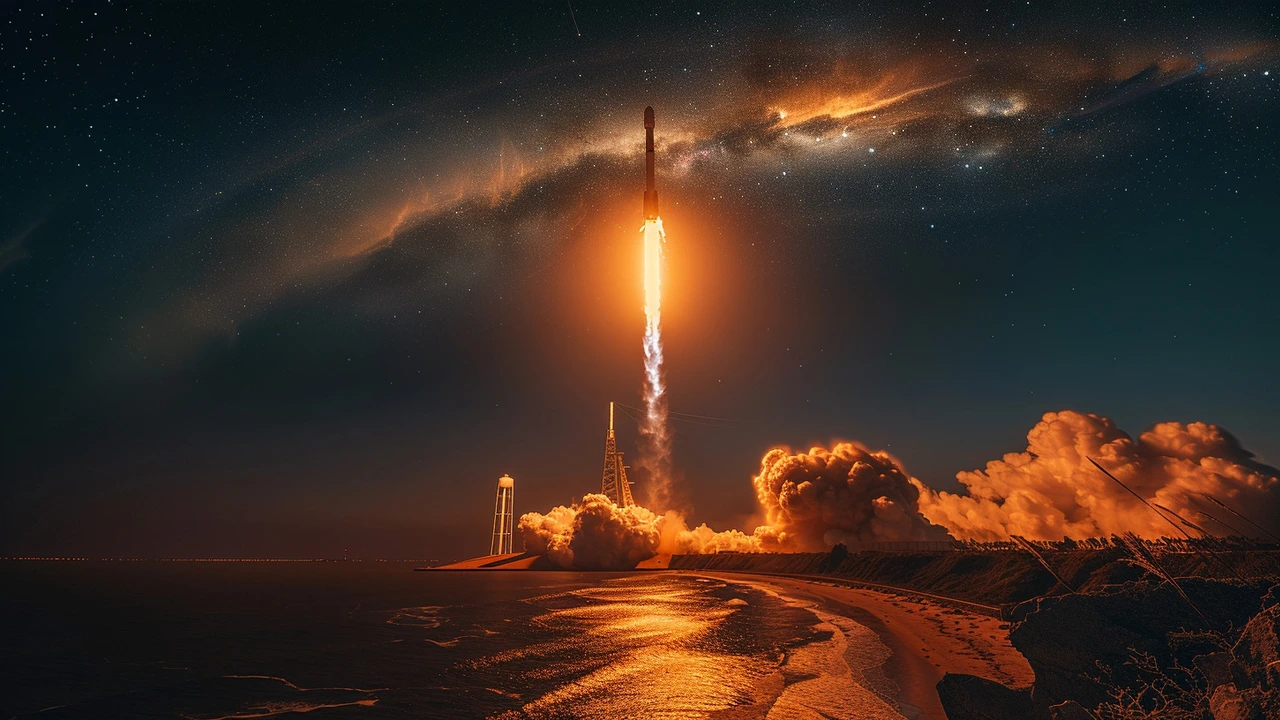SpaceX Defies Geomagnetic Solar Storm to Launch 23 Starlink Satellites

In Technology
SpaceX Overcomes Astronomical Odds with Successful Starlink Launch
On a bright Sunday, SpaceX once again proved its mettle in the aerospace industry by successfully launching 23 of its Starlink satellites into low-Earth orbit. This event, which took place at the Cape Canaveral Space Force Station in Florida, was not just any launch. It occurred during a period of significant solar activity, specifically a historic geomagnetic solar storm that posed a potential threat to the success of the mission. The National Oceanic and Atmospheric Administration (NOAA) had issued warnings about severe to extreme geomagnetic effects, which can disrupt satellite operations and impact electrical systems on Earth.
The Falcon 9 rocket, a veteran of numerous space missions, was the chosen vehicle for this operation. Remarkably, the first stage booster of this vehicle was not new to space travel. It had previously supported several other important missions including the launch of SES-22, ispace's HAKUTO-R MISSION 1, Amazonas-6, CRS-27, Bandwagon-1, and nine other Starlink missions. Following its historic flight, the booster successfully returned to Earth, landing on the 'A Shortfall of Gravitas' droneship in the Atlantic Ocean, showcasing SpaceX's commitment to reusability.
The successful launch of these 23 satellites has brought the total number of Starlink satellites in orbit around the Earth to a staggering 6,000. This marks a significant milestone in SpaceX's project of building a satellite internet constellation designed to provide low-cost internet to remote regions of the planet. The initiative is not only ambitious in its scope but also revolutionary in its potential impact on global connectivity.
Data from Jonathan McDowell, an expert orbital tracker and astronomer, has been instrumental in verifying the current total of Starlink satellites in orbit. This accuracy is crucial for the space community and those following the advancements in satellite technology. McDowell's tracking efforts offer a reliable source of information on the rapid expansion of SpaceX's Starlink constellation.
The timing of this launch was critical. It coincided with an upsurge in solar activity, including the release of a solar flare days prior, which escalated into a geomagnetic storm by the time of the launch. Such storms are known for their potential to disrupt satellite communications and damage satellite hardware. However, SpaceX's decision to proceed with the launch in the face of these challenges demonstrates both a high degree of confidence in the resilience of their rocket and satellite technology, and a robust preparedness strategy for dealing with such cosmic events.
In closing, this launch serves as a testament to SpaceX's technological prowess and its unyielding ambition to push the boundaries of what is possible in aerospace technology. It also underscores the importance of continued innovation and vigilance when dealing with extraterrestrial weather phenomena that could impact not just individual missions but the broader architecture of global satellite communications. As SpaceX continues to expand its Starlink constellation, the aerospace community and its watchers will be keenly observing its interaction with both market demands and cosmic conditions.
Write a comment